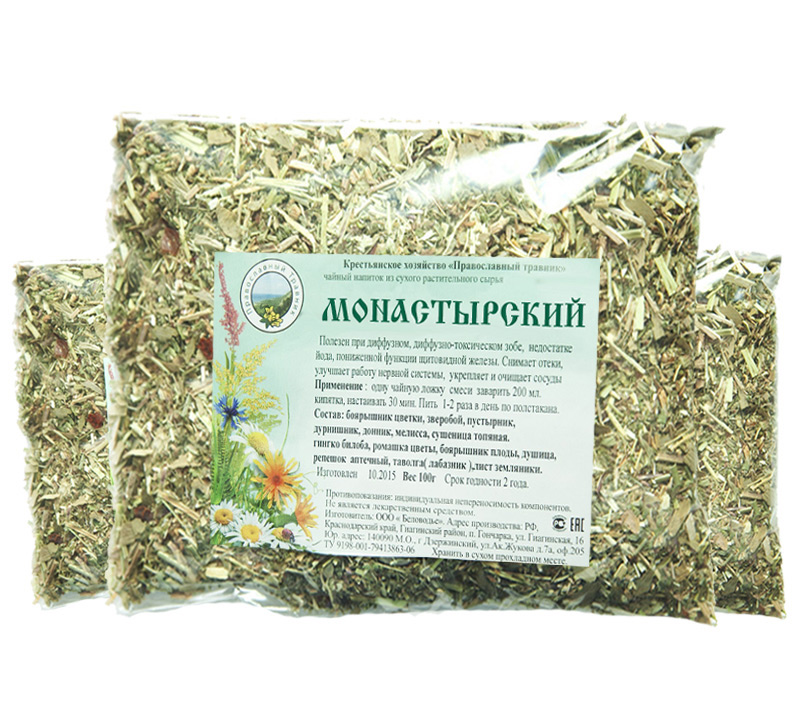
What is the monastery tea. What herbs enter it. How to drink it correctly.
The content of the article
- Medical properties and contraindications of monastic tea
- Video: Monastery Tea (monastery collection). History. How to distinguish real monastic tea from fake?
- Reception of monastery tea. How to drink monastic tea?
- How to comply with the rules for storing monastic tea?
- Monastic tea with hypertension: composition, grasses proportion
- Monastery tea from psoriasis: composition, proportions of herbs
- Video: Psoriasis treatment - Nano gel, ointment King of the skin, monastic tea
- Monastery tea from allergies: composition, proportions of herbs
- Monastery tea from thrush: composition, grasses proportion
- Monastery tea from diabetes: composition, grasses proportion
- Video: Composition of monastery tea from diabetes
- Monastery tea from sweating: the composition, the proportions of herbs
- Monastery tea from acne: composition, grain proportions
- Monastic tea from prostatitis: composition, grasses proportion
- Gastric tea Monastery: composition, legislation
- Cardiac monastic tea: composition, grain proportions
- How to make monastic tea at home?
- Video: Monastery tea from prostatitis
Monastery tea is the general name of a special herbal collection, which is allegedly going to monks of some kind of monastery and consecrate with the help of prayers. So what are the useful properties of monastery tea?
Medical properties and contraindications of monastic tea
It is believed that this collection has special healing properties and is useful for the body. He is able to deal with many diseases, for example, with:
- psoriasis
- hypertension
- prostatitis
- diabetes of both types
If you can use such tea regularly, then you can:
- achieve improvement of skin condition, hair
- get rid of allergies
- get rid of acne
- solve the problem of sweating
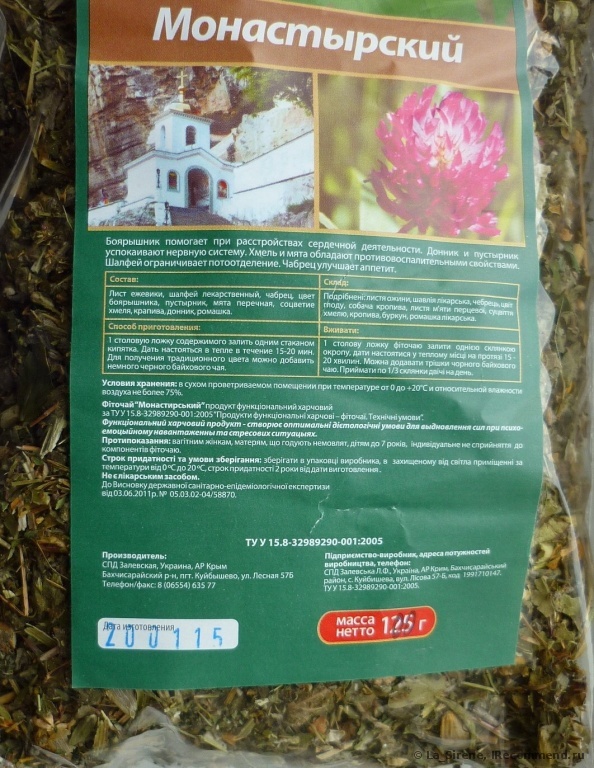
Monastery tea is a herbal collection from many diseases.
IMPORTANT: The effectiveness of monastic tea, allegedly proven, the fact that the monastery of the monasteries since ancient times was treated with the surrounding gifts of nature and practically did not use medicine
On various sites advertising monastic tea are indicated as manufacturers of different monasteries - from the famous Solovetsky, to the monasteries of Belarus, Pskov, Vladimir regions and so on.
The composition of the herbs included in the monastery tea, respectively, is submitted to the locality, on which herbs were collected, as well as taking into account the testimony to which one or another type of monastic tea is focused.
- If the composition of tea has leaves or dried blueberries, which grows in environmentally friendly wooded areas, then the beneficial effects will be subjected to, first of all, the organs of vision, because blueberries are known as the main component of funds for the treatment of vision
- Also, blueberries are useful for general improvement of health, imminent strengthening, stabilization of the pancreas, reducing blood sugar levels. Beneficial features? Medical? Yes of course
- Similarly, everyone knows the beneficial properties of a chamomile, a universal medicinal plant used with many ailments for different ages, starting with infant
So, acquiring monastic tea, it is necessary to ask his composition, what medicinal herbs enter it as components, for the prevention and treatment of what tea diseases are recommended.
Based on this information, you can make independent conclusions about the benefits of this tea specifically for yourself or your loved ones. But advertising information about the "mantoms" of the ingredients in the ingredients is still needed to consume with the mind: it is unlikely that there are special rituals in the monasteries for sale to the population of healing drinks.
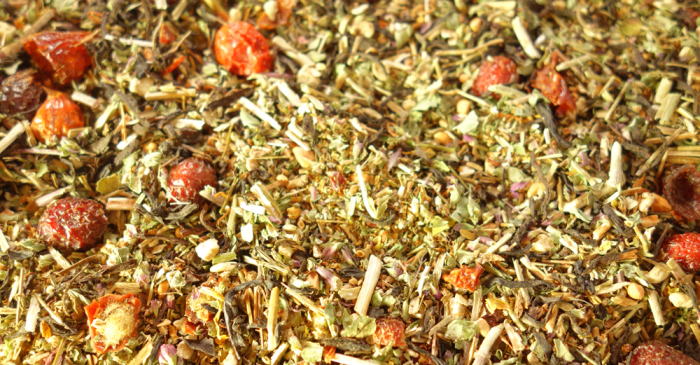
Important: Herbs, like medicines, should be used strictly dosed, periodically, according to indications. Do not drink medicinal herbs, relying on Avos, even those whose therapeutic effect has a wide action. If there is a disease, before using homeopathic preparations for its treatment, it is necessary to consult with a doctor about monastic tea and its effectiveness in a particular case. This is the best solution
Although, perhaps, someone likes the taste of herbal tea, and he is ready to drink it with pleasure, well, it is his choice.
Speaking of contraindications, it should also be emphasized that the individual intolerance to those or other tea components is possible. So watch your well-minded and draw conclusions.
VIDEO: Monastery tea (monastery collection). History. How to distinguish real monastic tea from fake?
Reception of monastery tea. How to drink monastic tea?
Monastery tea is the collection of useful herbs. It should be brewed daily or portion and consume only fresh.
Take monastic tea preferably a course per month twice a year: every day you need to drink a certain amount of tea. This quantity must be indicated on the package, depending on the testimony.
Perhaps therapeutic properties of the monastery tea will not be instantly, but over time, as it gradually affects the body.
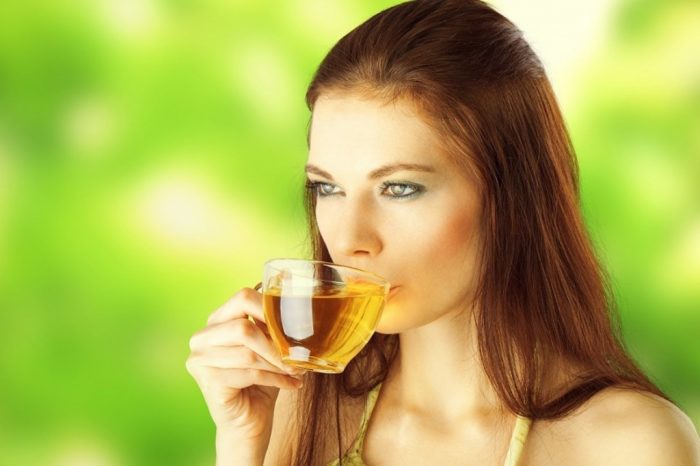
It is advisable to drink monastic tea by testimony.
If you want to know how to make monastic tea correctly, then follow these rules:
- choose the right collection
- correct tea
- do not keep a brewed drink longer period
- keep tea in recommended place
- observe the dosage
- don't mix different teas
- do not add your ingredients to balanced tea
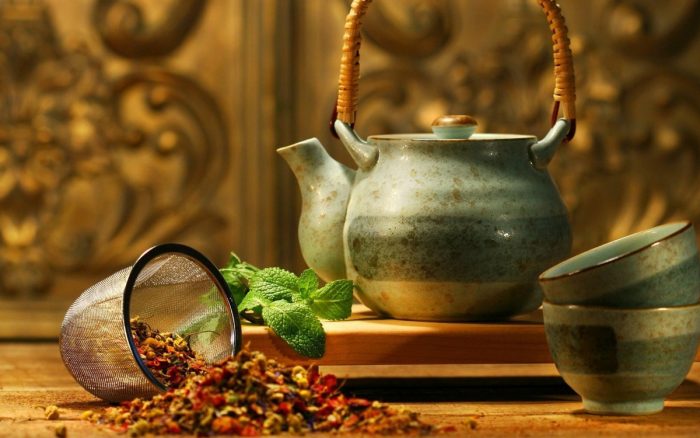
It is necessary to brew monastic tea in a special kettle.
Methods of brewing of monastic tea:
- Insist how tea: 1 teaspoon of collection is laid in the boiler teapot, a special cup or other dishes and poured a glass of boiling water, it is 15 minutes. Capacity is better not to cover with a lid
- Brew in the Turk or in a special chain. The same amount of tea (a teaspoon on 200 ml of water) is placed in a container and fastened with cold water. It is brought to a boil and insisted 15 minutes. Interestingly, such a way of brewing involves re-brew: therapeutic properties of herbs are preserved
- Brewing in the thermos. Put welding in a thermos, pour boiling water and covered with a loosely lid. Give a broken 15 minutes
How much tea need to drink every day: on average, 3 - 4 cups, if not prescribed otherwise.
Important: You can add honey to the monastery tea to taste, in extreme cases, sugar. But the lemon is not worth added, otherwise the balance of the beneficial properties of the beverage will break
How to comply with the rules for storing monastic tea?
Tea, as a rule, is specifically packed. The packaging should prevent external factors, smells, moisture, maximize the useful properties of the product.
- After the packaging is opened, you can leave the collection in it, but trying to close it tightly
- It is best to spend tea in a special tin or ceramic, or glass container, protecting it from sunlight and moisture
- Store the product preferably in a dry, dark place and use it only within the specified period.
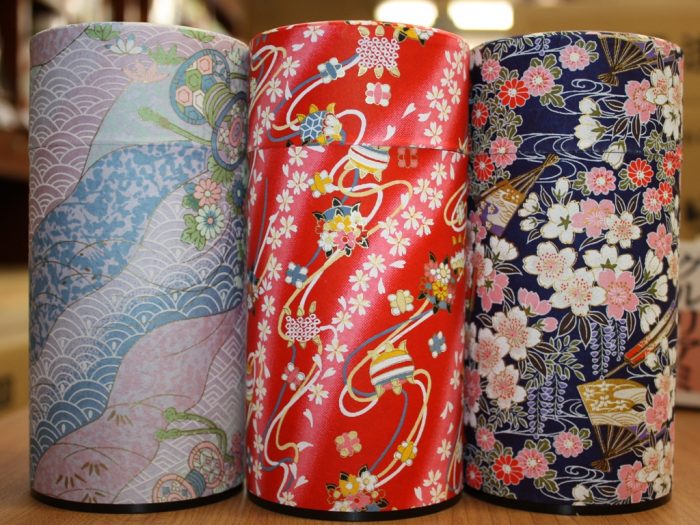
Better to suspend monastic tea in a special bank.
Monastic tea with hypertension: composition, grasses proportion
Hypertension is a serious disease and is associated with a violation of the heart, vessels, and so on.
Take monastic tea with hypertension, in coordination with the doctor and, most likely, without refusing to traditional treatment methods.
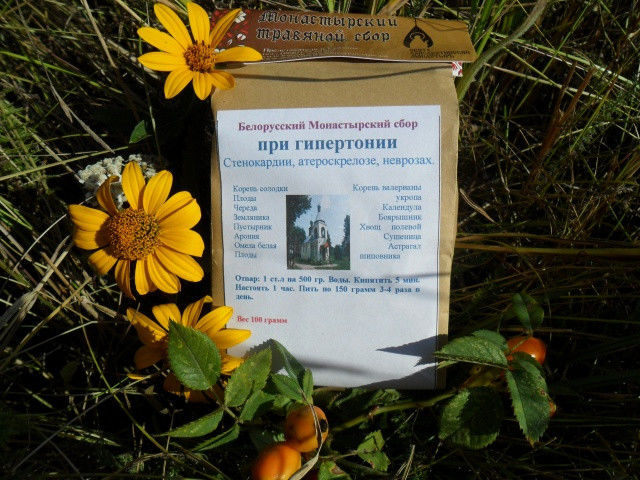
Monastery tea with hypertension.
Herbs included in the monastery tea from hypertension will contribute to the strengthening and purification of vessel walls, reduced cholesterol levels, improved blood flow, and, accordingly, decrease in blood pressure.
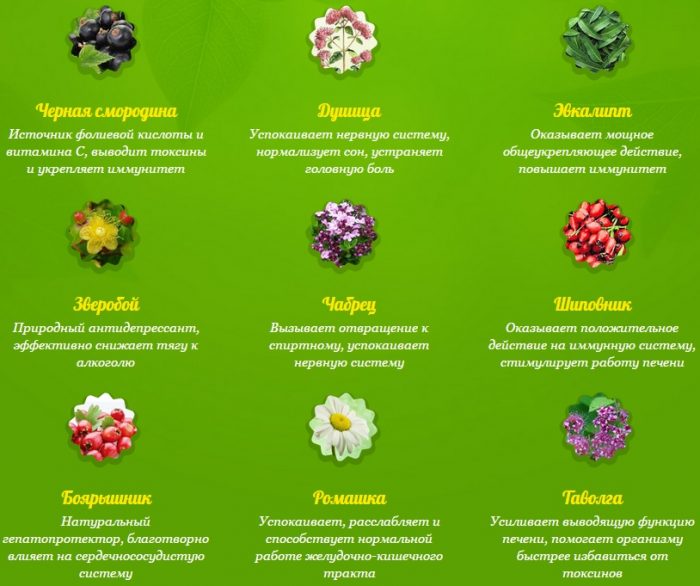
Composition of hypertension collection.
As part of tea from hypertension can be:
- Smorodine black. This berry is rich in vitamins and antioxidants, strengthens the entire body and walls of vessels
- Eucalyptus. Reduce headaches associated with high pressure
- Thyme. Soothe and relax the nervous system, remove the spasms
- Hawthorn. Strengthen the heart muscle
- Oregano Solvent cholesterol plaques in vessels
- St. John's wort Strengthens vessels
- Rose hip. Pour the body with vitamins, normalizes the pressure
- Chamomile. Prevents the development of vascular ischemia, including heart vessels
- Spiraea. Solves from heart attack and stroke
Monastery tea from psoriasis: composition, proportions of herbs
Monastic tea from psoriasis, due to its composition, will help the complex treatment of the disease, eliminating its external and internal manifestations.
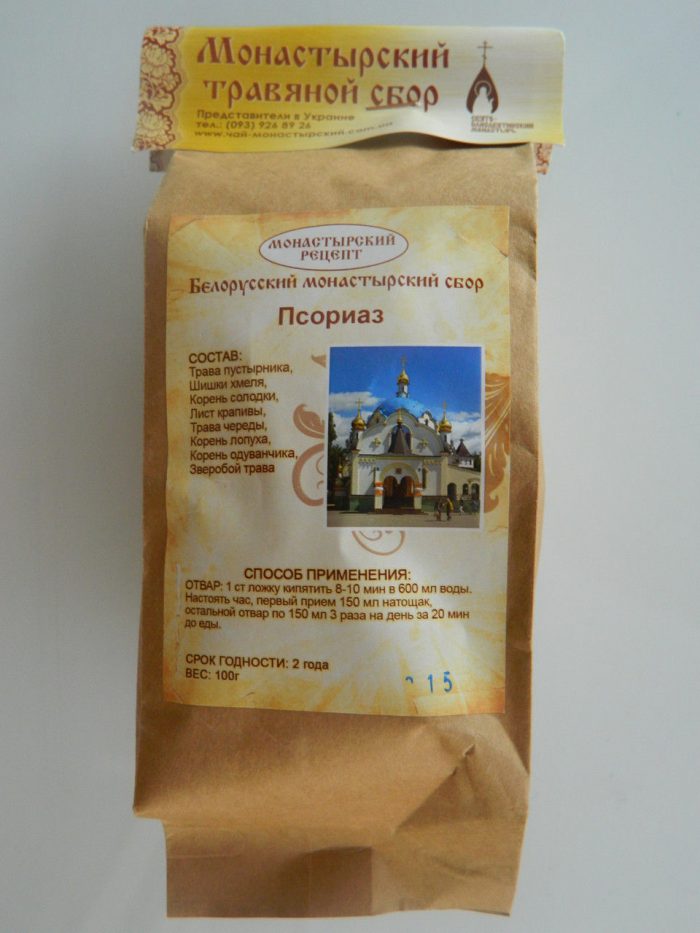
Monastic tea from psoriasis.
As part of such tea:
- Speed. This plant should contribute to the purification of blood, filtering the kidneys and removing excessive microelements of type sodium and chlorine
- Nettle. Used in such tea as an antiseptic and a source of vitamins
- Mint. It has a soothing, antiseptic effect. Also give tea a pleasant taste and fragrance
- Cowberry. Strengthen immunity, normalizes metabolic processes in the body
- Dandelion. Promotes the regeneration and healing of tissues
- Motherwort. It has a soothing, sedative effect. Fake manifestations of aggravation of the disease
- Elecampane. Also has a soothing and sedative effect, plus antiparasital effect
- Hawthorn. The plant is rich in microelements and vitamins, which helps to strengthen the overall condition of the body, strengthen the walls of the vessels, a decrease in cholesterol levels and an increase in lecithin level
- Oregano It has antimicrobial, anti-inflammatory and painful properties
- Celandine. The plant, which in its name emphasizes the effect created by it - the regeneration of skin cells, skin cleansing
VIDEO: Psoriasis treatment - Nano gel, ointment King of the skin, monastic tea
Monastery tea from allergies: composition, proportions of herbs
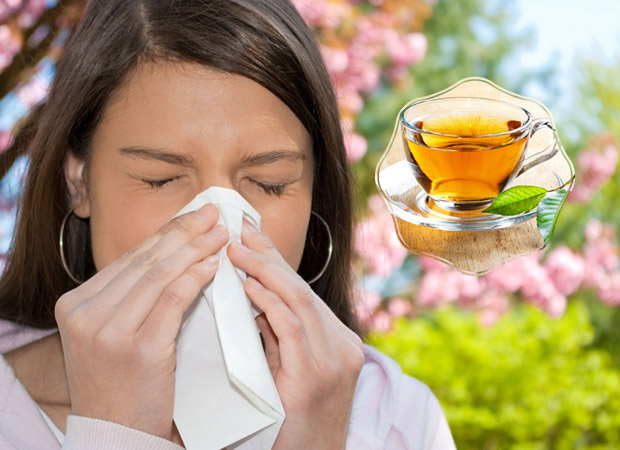
There are monastics tea that helps with allergies.
The main ingredients of monastic tea from allergies can be:
- Dog-rose fruit. To improve the immunity and normalization of the vitamin balance of the body
- St. John's wort For soothing, relieving irritation and swelling effect, to strengthen the vessels and tissues of the body
- Nather (root). The plant is, as evidenced by the name, has a multiple positive effect of exposure to the body. A large extent is anti-inflammatory, antiparasitic, sedative, soothing agent
- Oregano Known and proved antimicrobial, anti-inflammatory and painful properties of this plant
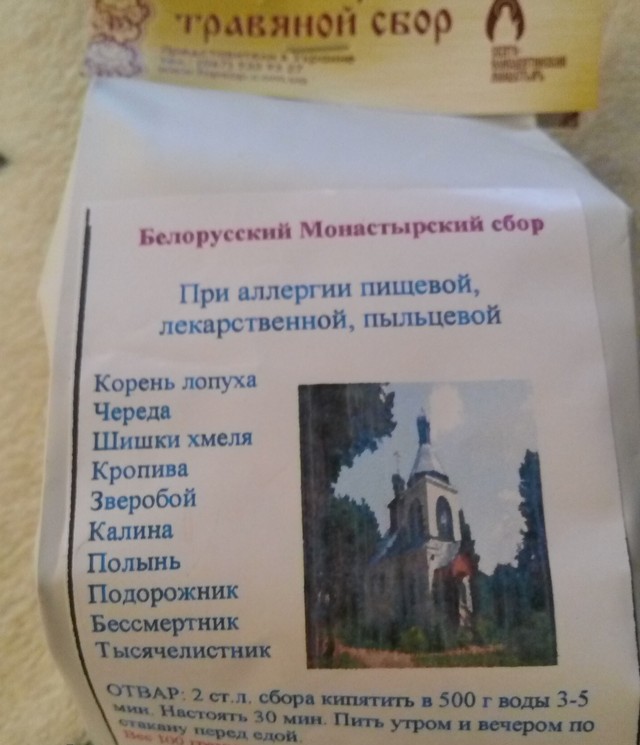
Monastic tea from allergies.
Monastery tea from thrush: composition, grasses proportion
Thrush, as you know, is a fungal disease, so in the monastic tea from the thrush ingredients are chosen in such a way as to strengthen the immunity of a woman, fighting fungal infection, sanitize its body, improve the condition of the mucous membrane, to remove inflammation and discomfort.
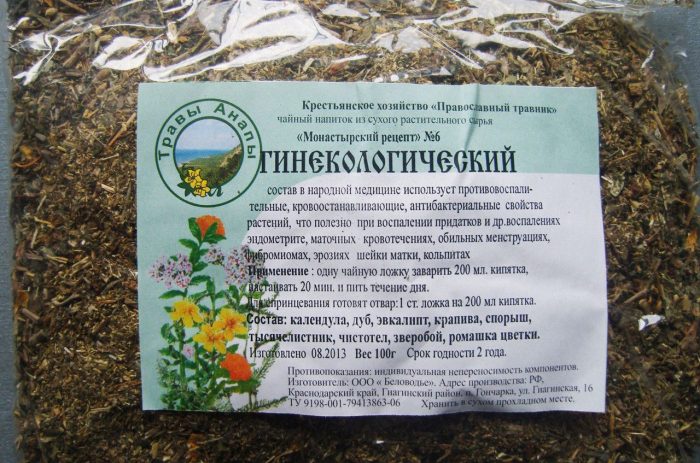
Monastic tea from thrush.
As part of monastic tea from the thrush, the following plants:
- oak bark
- drug daisy flowers
- hawthorn
- dandelion
- thyme
- cowberry
- dog-rose fruit
- blackberry
- donnik
- birch leaves
- leash leaf
- dress
Monastery tea from diabetes: composition, grasses proportion
The success of diabetes is largely depends on the lifestyle of a person, its mode and nutrition. If the patient is aimed at a full-fledged lifestyle, it is quite powerful for him subject to the recommendations of the doctor.
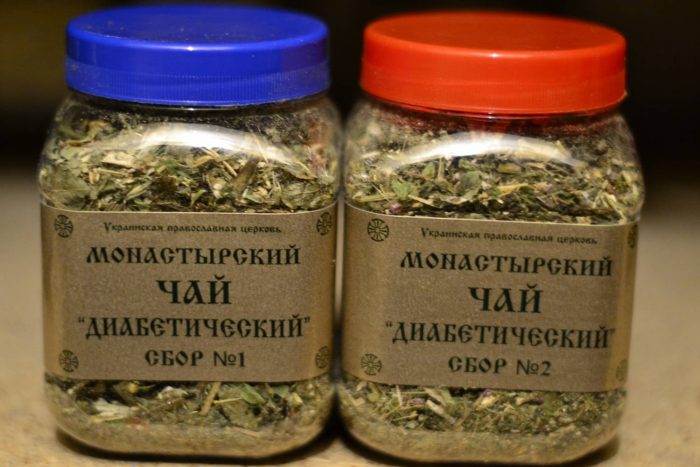
Monastery tea from diabetes.
Drug herbs need to drink medicinal herbs as preventive and healing measures, and their set, in particular, from diabetes is perfectly balanced in monastic tea.
As part of such grasses, contributing to:
- stabilization of blood sugar level
- restoration of natural metabolism, in particular carbohydrate
- stabilization of the pancreas and insulin synthesis
Also, such a collection of chamomile, rosehip berries, leaf and blueberries, dandelion, wild -swood, burdock, hunter and goat will help prevent development against the background of diabetes unwanted complications.
VIDEO: The composition of monastic tea from diabetes
Monastery tea from sweating: the composition, the proportions of herbs
The sweating may appear in humans in view of many reasons, and monastic tea in this case will help:
- stabilize local metabolic processes
- call soothing effect
- increase the stress resistance of the body
- eliminate the effects of violations of cardiovascular and nervous systems
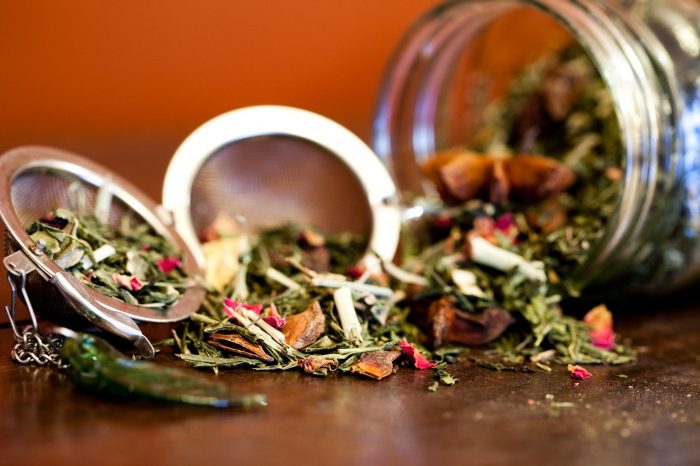
Monastery tea is fighting with health problems.
After all, precisely for these reasons appears sweating, nervousness, sometimes headaches.
As part of tea from sweating:
- thyme
- sage
- rosehip and hawthorn berries
- motherwort
- hunther
- calendula
- creeps
Monastery tea from acne: composition, grain proportions
The monastic tea will help to get rid of acne, because the effect of such tea ingredients is directed to: remove skin inflammation and clean it, calm itching, overcome allergic reactions.
As part of such tea, its main components, such as the fruits of the rosehip, the flowers of the Zverkoy, flowers and the leaves of the soul men, the root of nine. Black tea, honey and lemon are added to such tea.
Tea is preparing for the recipe described on the packaging. Its preparation is somewhat different from the preparation of ordinary monastery tea. For example, honey and lemon are added at the end, to the herbs already cooked in the water bath.
Monastic tea from prostatitis: composition, grasses proportion
The monastery tea from prostatitis includes the following herbs:
- Dog-rose fruit. This ingredient is the basis of such tea, it will help strengthen the body's resistance, saturate with vitamins, normalize blood flow
- As part of the tea also: the flowers of the Hypericum, the root of ninewide, the soul man. The whole range is aimed at enslaving the body to fight with infection to decrease with pain syndrome and inflammation
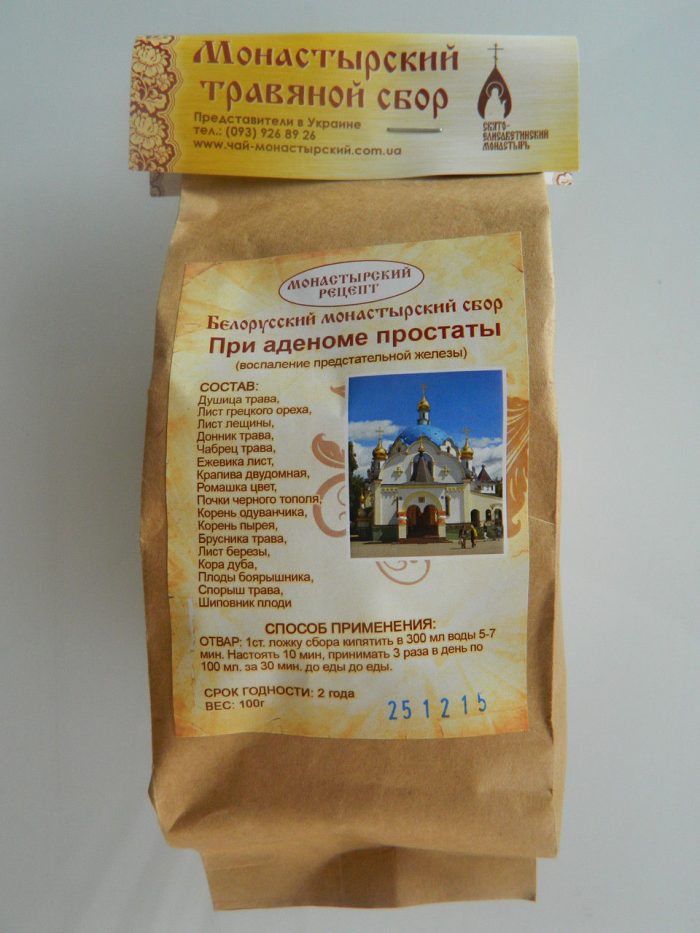
Monastic tea from prostatitis.
When brewing such a collection at home in a mixture of the named ingredients, a part of black tea can be added, which will additionally enhance the drink with vitamins and improve its taste.
Gastric tea Monastery: composition, legislation
The action of the components of the gastric tea of \u200b\u200bthe monastery is aimed at helping the treatment of such manifestations of disorders of the gastrointestinal tract, as:
- enteritis
- gastritis and associated colic and heartburn
- dibacteriosis
- flatulence
- constipation
- diarrhea
- Such a collection is effective and in poisoning, including alcohol.
It will help relieve spasms, inflammation, improve the secretion of gastric juice and intestinal enzymes, normalize digestion, restore disturbed metabolic processes, healing ulcers on the mucous membrane.
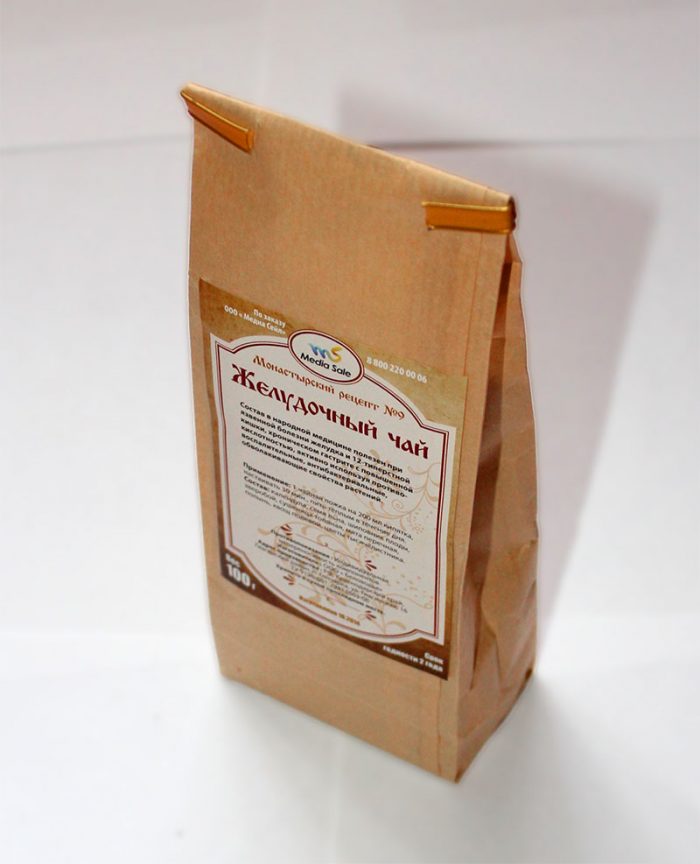
Gastric monastic tea.
All these functions perform the following components of monastery gastric tea:
- flax seeds
- petals and calendula flowers
- yarrow
- pharmacy daisy flowers
- owin
- peppermint
- motherwort
- bolotny drying
- bark Willow
- immortelle
Cardiac monastic tea: composition, grain proportions
Diseases of the cardiovascular system, as you know, are the first cause of mortality of people around the world. Therefore, it is very important not only seriously approaching their treatment, but also engage in their prevention. Reception of cardiac monastery tea, a clear thing, does not fully replace drug treatment, but makes its significant contribution to the restoration of the heart and vessels of patients.
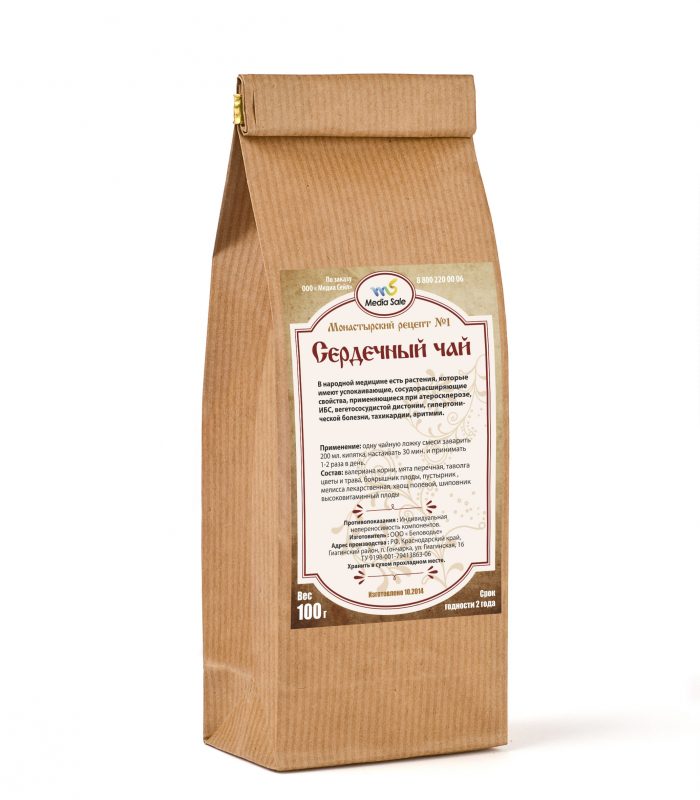
Cardiac monastery tea.
Such tea is capable of:
- Remove pain in the heart
- Improve the work of the heart muscle
- Strengthen vessels
- Improve blood circulation
- Calm the nervous system
- Provide sedative
As part of such tea, well-known, but balanced components from the roots of Valeriahs, pepperproof mint, hawthorn fruits, mother-in-law, melissa, horsepower, Toll, were balanced.
Each of these medicinal herbs is known for so-called cores, but they are all additionally effective as part of tea, complementary and interconnecting each other.
How to make monastic tea at home?
Optionally, of course, you can prepare monastery tea at home yourself.
For this, the grass or rhizomes are made for any kind of tea or rhizomes, they are dried, stored for storage are connected in the prescribed propirations.
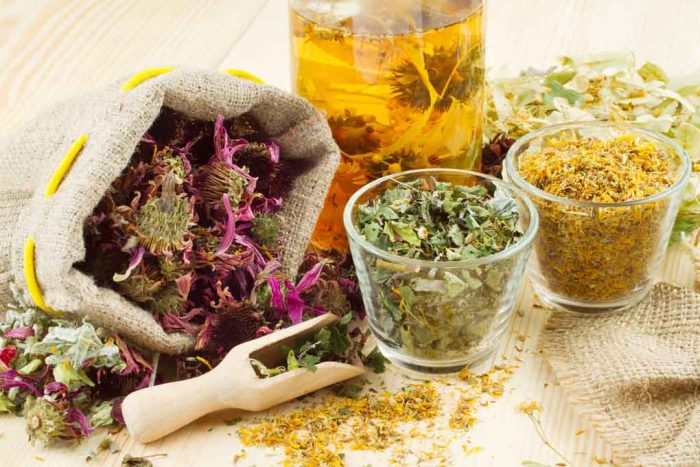
The semblance of the monastery can be prepared with their own hands.
However, all this is done already and sold in the finished form in carefully observed proportions. The advantages of the prepared fees of monastic teas of all kinds is that they are assembled in environmentally friendly terrain and are harvested with the help of an assessed century technology. Even observing the proportion, preparing the monastic collection on their own, you can miss something, and something that monks can be silent, and not finish.
